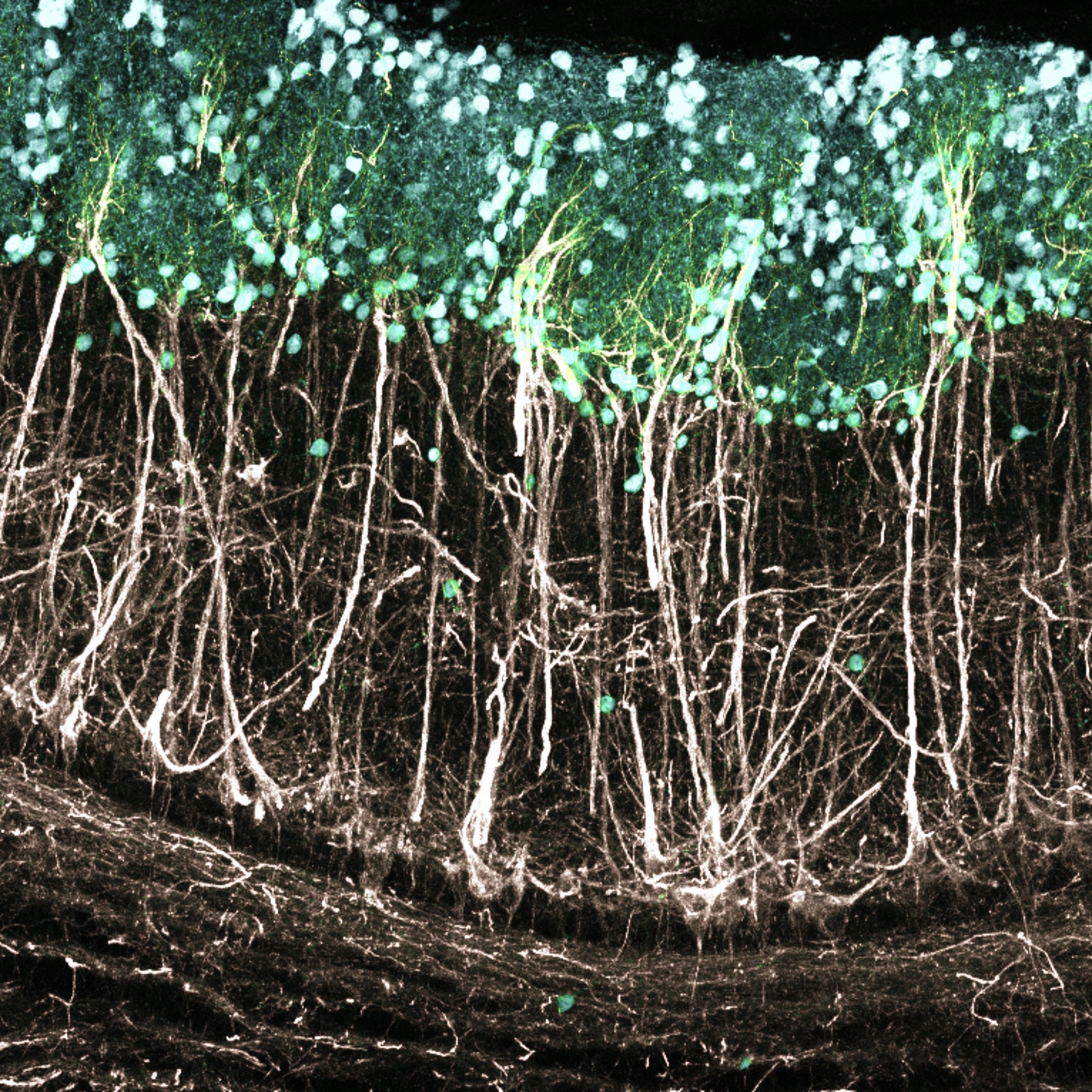Neuronal Excitability
Characterizing mechanically activated currents in non-human primate trigeminal ganglion neuron subtypes to improve understanding of mechanosensation.
Principal neuron dendrites in the adult mouse olfactory bulb extending up towards the glomerular layer where they receive sensory input.
These partial 3D reconstructions of synapses from wild-type and synapsin knock-out mice show the presynaptic membrane, the postsynaptic membrane, and synaptic vesicles.
Looking back at ten years of eNeuro papers, this post features two papers published in 2018.
Slice culture study reveals that prolonged silencing of neurons induces context-specific seizure-like activity that is only partially reversible and explores the underlying mechanism.
Removing inhibition in the hippocampus increases epileptic seizures, but not as severely or as long-lasting as neuroscientists may predict.
Looking back at ten years of eNeuro papers, this post features two papers published in 2016.
Researchers find that synaptotagmin-7 plays an important role in dopamine release during phasic bursts of firing.
Confocal image of the hippocampus showing somatostatin inhibitory neurons (green).
This study reveals consequences of SYNGAP1 haploinsufficiency in hippocampal GABAergic interneurons.
FOLLOW US
TAGS
CATEGORIES





 RSS Feed
RSS Feed




